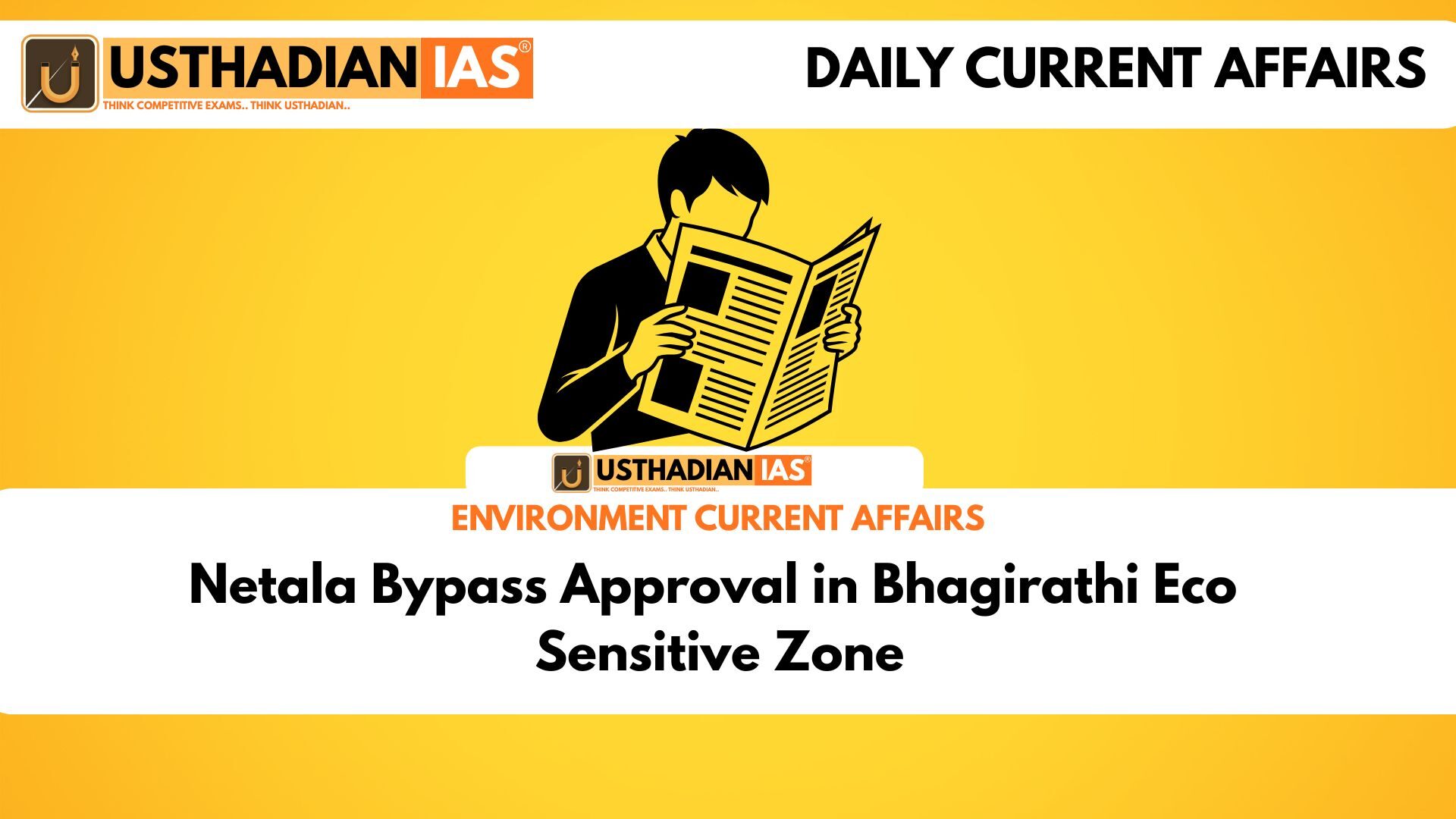Project in Eco Sensitive Zone
Netala Bypass Approval in Bhagirathi Eco Sensitive Zone: The Uttarakhand Government recently gave in-principle approval for the Netala bypass project inside the fragile Bhagirathi Eco Sensitive Zone (ESZ). This came despite earlier rejection by the Supreme Court’s High-Powered Committee (HPC) on environmental and social grounds.
The Ministry of Defence categorized the project as strategically important. However, experts warn that this region has a history of landslides, subsidence, and floods, raising serious safety and ecological concerns.
Static GK fact: The Bhagirathi ESZ was notified in 2012, covering a 100 km stretch of the Bhagirathi river from Gaumukh to Uttarkashi.
Ecological Concerns Raised
Recent flash floods in Dharali exposed slope instability in the same region where the bypass alignment is planned. A section of the slope even collapsed during the floods, strengthening expert opposition to the project.
Environmentalists argue that strategic importance cannot overshadow the long-term risks of destroying fragile ecosystems. The conflict between national security projects and ecological protection is becoming a recurring issue in the Himalayan belt.
Static GK Tip: The Himalayas are one of the youngest mountain ranges in the world, making them highly prone to landslides and seismic activities.
Development Versus Environment
The bypass debate reflects the larger development vs. environment dilemma. Proponents of development stress the need for economic growth, poverty reduction, and infrastructure expansion. They argue that increasing populations require more utilization of resources.
On the other hand, environmental advocates highlight that development is meaningless if ecosystem collapse threatens survival. Even small projects, when accumulated, can result in massive environmental degradation.
Drivers of Degradation
Environmental decline in fragile zones is often linked to rapid urbanization, Special Economic Zones, policy loopholes, and fast-tracked clearances that bypass detailed impact assessments. These systemic weaknesses allow large-scale projects to move forward despite known risks.
Static GK fact: India introduced Environmental Impact Assessment (EIA) in 1978, making it a mandatory process for major projects by 1994.
Sustainable Development Approaches
Ecological approach
Focuses on biocentrism, where human life must operate within finite ecological constraints.
Strong sustainable development
Emphasizes that environmental protection is a precondition for long-term economic growth. Community participation and regulation are central to this approach.
Weak sustainable development
Prioritizes economic growth but integrates environmental concerns through green taxes, policy tools, and compensatory mechanisms.
Treadmill approach
Equates sustainable development with sustained economic growth, relying on human ingenuity and technology to overcome ecological challenges.
Way Forward
Balancing strategic infrastructure needs with environmental sustainability remains a core challenge for India. In sensitive areas like the Himalayas, strong sustainability principles must guide decision-making to prevent irreversible ecological damage.
Static Usthadian Current Affairs Table
Netala Bypass Approval in Bhagirathi Eco Sensitive Zone:
| Topic | Detail |
| Project approved | Netala bypass project in Bhagirathi ESZ |
| Approving body | Uttarakhand Government |
| Previous rejection | Supreme Court High-Powered Committee |
| Strategic importance | Classified by Ministry of Defence |
| Recent disaster | Dharali flash flood in Uttarakhand |
| Ecological concern | Slope instability and subsidence risk |
| ESZ notification | Bhagirathi ESZ notified in 2012 |
| Development vs environment | Key debate in Himalayan projects |
| Sustainable development models | Ecological, strong, weak, treadmill |
| EIA introduction in India | 1978, mandatory since 1994 |








